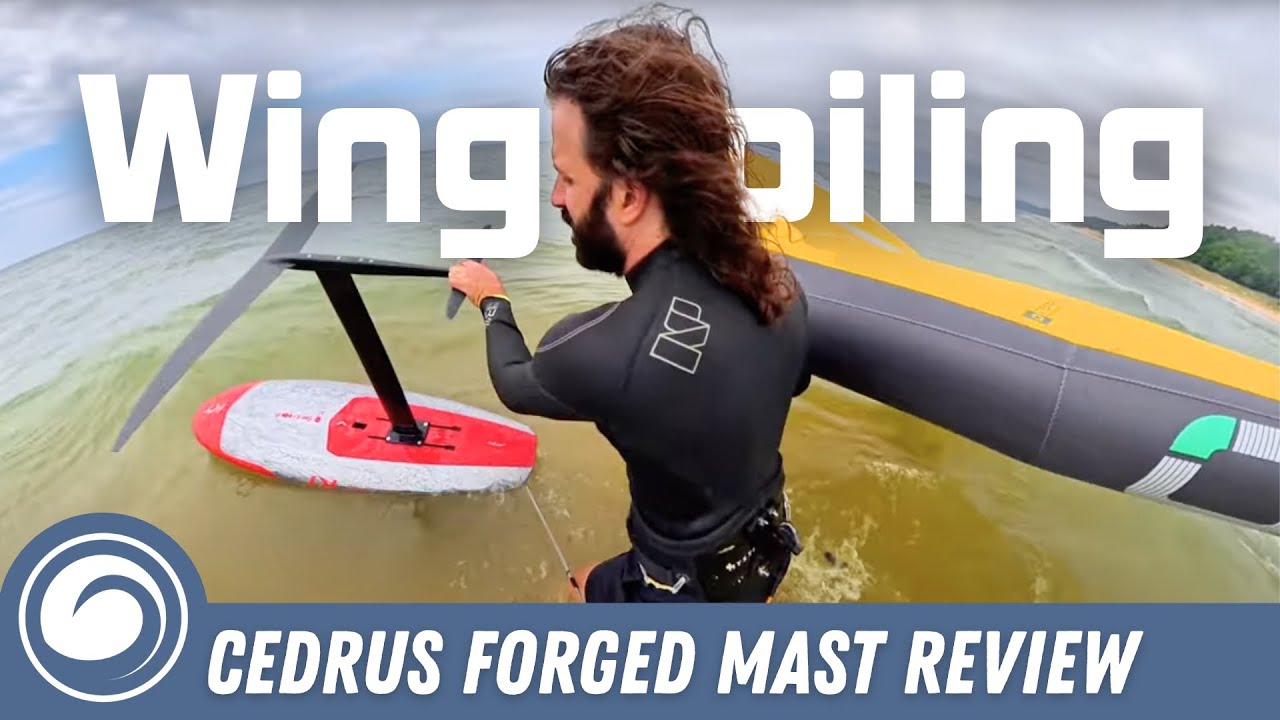Gold mast = Lime green wetsuit ![]()
I don’t hate it, but I definitely would prefer a black or silver one. On the other hand, the gold mast would give us some good Goldmember memes.
It shouldn’t be understated what an Accomplishment this is. All existing aluminum masts are well within the technical capabilities of extruded aluminum and milled baseplate. This is the first thing I’ve seen to step out of that box at all. Adding welding to that process plus the tapered process(which I’m super curious about!) This is significant innovation at the base of the market which is really cool to see!
I appreciate Kyle’s innovative, first-principles approach, but I’m more confused after reading the “Mast Flex: Setting the Record Straight” post.
-Is this a deflection value, or a stiffness value?
-Do we want a tall bar or a short bar?
-Are mismatched bending and torsion good/bad/optimal?
-How critical are the adjustments?
-How does stiffness benefit the rider?
I agree that the “High Mod → Stiffer → Better” perception overlooks tradeoffs like speed and practicality. And I understand the perception that advertising=bad, but I think it’s worth considering putting on the ‘marketing hat’ when distilling information, and focusing on customer benefit.
Hi Emery, the marketing for this mast is “stiffness of HM carbon at 1/3 the price.” The benefits should be pretty obvious there, but they are further discussed on the product page: Evolution Aluminum Mast – Foil Cedrus
For those who want a more technical explanation, I have provided the data along with a blog entry discussing my methods but leaves the ultimate interpretation up to the reader/rider. This is not intended to be formal marketing content, hence the location being a blog.
-The results presented contain stiffness values.
-Assuming you desire a stiff mast, a long/tall bar is better.
-As stated, I do not know the ideal ratio of bending to torsional stiffness values. All I can say is that torsional stiffness should not be overlooked. But like bending, when is enough enough? This will likely depend on the rider/foil.
-I’m not sure what you mean by adjustments. All of the masts tested were about 80cm long, but there was some variability in lengths so I used the equation shared to normalize the bending data while torsional stiffness results scale linearly with length.
-Stiffness benefits the rider by giving more direct control of the foil.
Hope that helps.
In terms of bending, I suppose a few cm of differences between mast are likely not an issue, but I would imagine some of the ranges of fuses could have a greater impact on leverage for deflection. Not sure if you are using OEM fuses, or using adaptors to the same fuse, and what impact that might have.
As a someone that primarily wings or parawings in place, and downwind, torsion is my biggest pain point.
On old gen masts, when snapping a heel side turn, especially on a large front wing, you can sometimes load up a twist, and then get thrown as it bends back to neutral - but most feel passable today.
In downwind, above certain speeds it seems like there can be a vibration back and forth which feels inefficient and less responsive, and some setups appear stiffer or have less resonance when you do a bend and release on land (yaw vibration).
Comparing something like the UHM Cedrus Surf, to the Forged — it looks like it’s not just a lower cost option, but otherwise outperforms that mast (equal bending, better torsion). Setting aside cost - is the alloy what you would put recc for a dw rider? Is it a faster section than the UHM Surf?
If it’s not too proprietary to share, I’d love to hear about how the variable section (extruded?) forging is produced. Do you have a variable section die?
We use a rigid bar to simulate the fuselage if we didn’t have the OEM fuselage. There is no deflection in this bar, and again as stated we compensate for differences in length if the load is applied at different locations. You can ignore the effects of the fuselage.
Evolution Surf still has lower wetted area (due to shorter chord length) and will have better glide than Forged. Surf UHM is basically as stiff as Forged. Forged might be a little more stable at speed due to the longer chord length. Each model has benefits and drawbacks. We try to make all data available and let customers decide what makes the most sense for them. We have had a lot of buyers torn between wind and surf, and one of the main reasons we developed aluminum, was to offer something directly in the middle between the two. The price is a bonus.
I’m sorry we can’t share details of our proprietary manufacturing processes. The patents are still pending.
Way cool! I want to guess hydroforming but it can’t be that because the manipulated section is SMALLER and usually hydroforming relies on a mold larger than the original extrusion to contain an expanding shape. I guess it could be a a variation with two part mold that compresses the original extrusion while a specific volume of non compressible water (plus a little compressible air) are contained in the sealed Mast To Moderate ensure the mold presses evenly on the part. Really cool To think about!
It was a hard problem to solve. We’ve been working on this mast for over 2 years. Thank you for appreciating the engineering and manufacturing technology.
Could you hydroform from a smaller extrusion inside the mold?
Yeah, but the parent extrusion in this case is bigger. The Clydesdale is clearly the unaltered extrusion, and the narrower forged is the modified.
I think it could be crushed in the center section to a thinner profile using a hydraulic press if the extrusion is designed correctly. Probably takes a very beefy press with thoughtfully designed tooling
I think there’s gotta be a pressure trick with that welded seal. That tight weld like that is a part of a lot of different hydro forming processes. Somehow controlling that deformation with internal pressure!
Do we have an eta on when will we start seeing some reviews of this bad boy? I’m very close to pulling the trigger.
Any thoughts on how it would stack up to a classic 28” lift mast? or vs lifts m2 / m6 mast.
Tucker posted the first review I have seen. That black proto looks sick. Maybe a black option could be offered in the future. Either way it sounds like there will be an uptick in Goldmember fans on the water
Mid October is the ship date I believe
What are downsides or trade offs vs carbon? Sounds like 1lb heavier than carbon is the main one? Any input on over all weight vs branded masts? Not sure how much the adapter and everything adds.
1mm thicker and a full cord for the length of the mast so it wont be as loose as the Evo Surf. Great info on the Cedrus site. Kyle is very transparent on what to expect. Solid looking option but it’s not meant to be the fastest or most efficient mast on the market. It sounds like it’s going to be very close and likely better than most stock masts on the market and close in performance to all but the HM Carbon masts which it will be very close to in performance for a third of the price. Pretty awesome innovation for the industry
It is hard to over sell the benefits of a stiff mast for control of larger high aspect foils. Looking forward to trying one.
The sealed construction is an improvement over the old alu version. The evo adapter system is miles better than the old version (I’ve previously owned old alu and carbon and currently owning an evo surf). It’s great that it’s cross compatible to the carbon masts, both for second hand adapter market and if you want to move up from alu to carbon.
I wonder if welding the classic base plate to mast will create similar stiffness. I guess the 10mm pins helps the stiffness for the adapter part.

